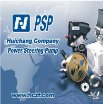-
Welcome to Auto Parts Forum
Whether you are a veteran automotive parts guru or just someone looking for some quick auto parts advice, register today and start a new topic in our forum. Registration is free and you can even sign up with social network platforms such as Facebook, X, and LinkedIn.
1994 cheverolet suburban 5.7 power steering hosesing hoses
-
Similar Topics
-
By carbdoc
I can't find a rebuilt brake booster for my 1978 Dodge D-150 truck anywhere; I have been hunting for months. The Chrysler number is 4094149. The A-1 Cardone number is 54-73716. I would settle for a rebuildable core at this point; my old booster is rusted-out on the back side so it is no good as a core.
-
By 1772668470
Installing a power steering pump involves several steps. It’s important to have the correct tools and follow safety precautions. Here’s a step-by-step guide to help you through the process:
Tools and Materials Needed:
New power steering pump
Power steering fluid
Wrench set
Screwdrivers
Pulley puller (if necessary)
Jack and jack stands
Drain pan
Safety glasses and gloves
Torque wrench
Steps to Install a Power Steering Pump:
-
By 1772668470
Hello every one, this is power steering pump factory in china.We have 17 years of manufacturing experience with high quality and competitive price, if you have interest ,pls feel free to contact us. call whats app:+86 18006521672 email:[email protected]
-
By Dorman Products
Steering and Suspension Knuckles | Counterperson Training from Dorman Training Center
-




Recommended Posts
Join the conversation
You can post now and register later. If you have an account, sign in now to post with your account.
Note: Your post will require moderator approval before it will be visible.